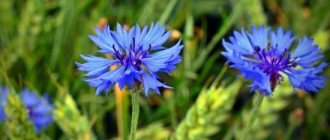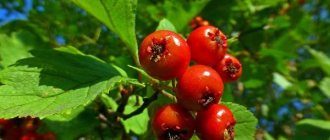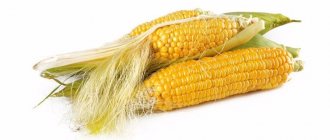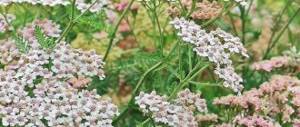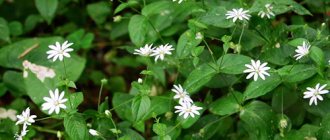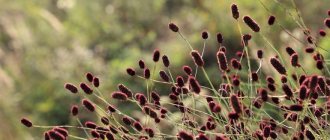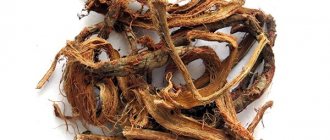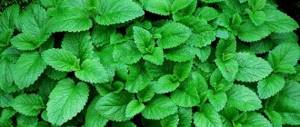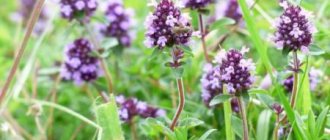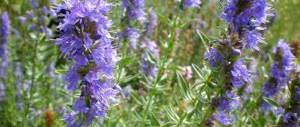Probably, many have heard about the healing properties of an exotic plant - woolly erva. Half-fallen appeared quite recently on pharmacy shelves. However, in a short period of time, this remedy has gained popularity among those who suffer from gallstones and urolithiasis.
Pol-pal - an herb, the instructions for which are present on each package, have a positive effect on the body as a whole. In fact, this plant has enormous healing power, which many are not even aware of.
What is half-palm?
The herb, the use of which is permitted only after consulting a doctor, is a biennial plant. Its height can reach 140 centimeters. Erva is woolly, in other words - half-palmed, has a taproot system, a main root (usually gray-white) and lateral branches.
As for the stems of this plant, they are distinguished by their lush green color and strong branching. They can be not only creeping, but also erect. The grass has elliptical, and in some cases even round, leaves. Their length is about two centimeters and their width is one and a half centimeters.
The flowers of this plant are inconspicuous and small. They have a whitish-green or cream-colored perianth. Erva woolly flowers create spike-shaped inflorescences. The grass also has fruits. As a rule, they are small in size and resemble boxes with an elongated spout.
Description
Erva woolly - grass, lifespan - 2 years, belongs to the Amaranth family. During this time it can grow up to one and a half meters in height. The root is grayish-white, with small branches, up to 18 cm long. In nature, there are both erect and creeping specimens, highly branched, with small pubescent leaves. Hence the addition to the name - “woolly”. The leaves are small, up to 2 cm in diameter. The flowers are unattractive, cream to greenish in color, collected in a spikelet. Flowering occurs starting in June and can continue until frost. Ripening begins in August, the fruit looks like a small box with a barely elongated spout.
Erva woolly comes from the island of Ceylon, which is located in Sri Lanka, and can also grow in India, Australia, and African countries. Thanks to the healing properties of this herb, which local residents have long known about, it has found its way onto the shelves of Russian pharmacies and, due to its affordable price, is popular among the population. This plant also has another name: half-fallen. It loves high humidity and warmth and is very demanding on climatic conditions. It is not found in the wild in Russia. On our mainland, the most suitable place for growing this plant is Georgia with its subtropics.
Erva woolly grass
When is the best time to collect
The medicinal herb allows you to get rid of many diseases. However, not everyone knows when it is best to collect it. The seeds, leaves, roots and stems of the plant are usually used as medicinal raw materials. In pharmaceutical preparations, all these components are mixed. Grass is usually cut during flowering and fruiting periods. This usually happens in October. At this time of year, the grass can reach a height of up to 40 centimeters.
As for collecting roots, the plant is usually completely torn out to extract this raw material. After this, you need to separate the ground part. The root of the woolly erva is thoroughly washed and divided into strips, the length of which should be no more than 20 centimeters. Such raw materials are usually dried in air. This is best done in the shade or in a room with good ventilation. Otherwise, the roots will lose their beneficial properties.
As for the ground part, it is usually dried in the same way. Half-fallen grass produces seeds, which are usually collected after the first frost. The raw materials are first dried and then threshed.
Infused with decoctions of woolly erva
- A decoction of the tropical weed is used to cleanse the body of waste and toxins, in the complex treatment of gynecological diseases, for the treatment of diabetes and joint diseases. To prepare a decoction, pour a tablespoon of chopped herbs into 250 ml of hot boiled water. The resulting mixture is placed in a saucepan with water and heated to a boil. Afterwards, cook in a water bath for 15 minutes. The resulting broth should be covered with a lid, placed in a dark place and left to infuse for 1.5 hours. After this time, the herbal decoction is filtered through cheesecloth, diluted with boiled water to the 200 ml mark, and drunk half a glass 3 times a day before meals.
- A more concentrated drink is used to treat cardiovascular diseases. It is prepared at the rate of 1 tablespoon of the plant per 100 ml of hot water. It is recommended to take this decoction in courses, three times a year for 10-20 days. The drink should be stored in the refrigerator for no more than 24 hours; before drinking, it must be warmed to room temperature. Eating expired products is strictly prohibited. While taking the drug, it is recommended to adhere to a salt-free diet, avoid eating fatty and fried foods, as well as alcohol.
- Erva woolly infusion has a strong anti-inflammatory and diuretic effect, helps in crushing stones and removes sand from the body. It is used in the treatment of pyelonephritis, cystitis, urolithiasis, and gynecological diseases. To prepare, brew a tablespoon of the plant with 1 cup of boiling water and leave in a thermos for 3-4 hours. Take 120 ml infusion twice a day on an empty stomach. Can be stored in a thermos for no longer than a day.
- During the winter cold, tea from a tropical weed is successfully used to boost immunity. To prepare it, 1 tablespoon of the herb is brewed in a porcelain teapot with 200 ml of boiling water and simmered for about 2 hours. It is best to drink 120 ml of tea daily after waking up and before bed.
In addition to increasing the protective properties of the body, the herb helps with bronchial diseases, enhances the liquefaction and discharge of sputum from the lungs. To treat wounds, burns and acne, compresses soaked in a herbal decoction are used.
licorice - medicinal properties and contraindications
Chemical composition
The medicinal properties of the herb are determined by its chemical composition. This plant contains a colossal amount of useful components, including:
1. Potassium. Thanks to this component, the herb reduces the level of carbon dioxide in the blood, maintains the water-salt balance at the same level, normalizes blood pressure, controls muscle contraction, including the heart, and provides an electronic nerve impulse.
2. Calcium. This component improves the transmission of nerve impulses, participates in the formation of bone and dental tissues, normalizes metabolism, improves blood clotting, strengthens heart vessels and the immune system.
3. Alkaloids. Pol-pal is a herb whose use should be under the supervision of specialists. Thanks to alkaloids, blood circulation is normalized, they help to quickly stop bleeding, relieve spasms and pain syndromes, and act on the central nervous system as a pathogen in small doses.
4. Phenolic acids. These substances neutralize harmful bacteria, speed up the treatment of burns and wounds, relieve pain syndromes, and also limit the separation of the ulcer surface.
5. Flavonoids. These components calm the nervous system, neutralize the effects of any free radicals, strengthen the walls of blood vessels and capillaries, normalize blood pressure, stimulate the adrenal cortex, and also regulate heart rhythm.
6. Pectins. The grass is half-fallen, reviews of which are mostly positive, and contains them in large quantities. These components remove waste and toxins, increase peripheral blood circulation, normalize metabolic processes, and lower cholesterol levels.
7. Alkanes, or saturated carbohydrates. They have an enveloping and wound-healing effect. That is why they are usually used to make various ointments and gels.
The composition of the herb and its effect on the body
Erva woolly has another name - half-fallen. This is a herbaceous, highly branched plant more than one meter long. Its natural habitat is India, Africa, Indonesia, Australia, that is, regions with a tropical and subtropical climate. In Russia, the plant is grown specifically to obtain medicinal raw materials, and the grass can also be planted in your own garden.
The healing properties of woolly erva have been officially proven. The main composition of the plant is presented:
- Bioflavonoids (campefrol, rhamnetin). They have a cytostatic effect (prevent the formation of atypical cells), antispasmodic, diuretic and antioxidant effects;
- Organic acids (lilac, vanillic). Endowed with antioxidant, antiseptic, antiparasitic properties. Lilac acid has an analgesic effect and reduces the concentration of sugar in the blood;
- Alkaloids. Necessary in the body to maintain the proper functioning of the central nervous system. Under the influence of alkaloids, nervous tension decreases, blood pressure stabilizes, and the elasticity of the walls of blood vessels increases;
- Polysaccharides. They have an immunostimulating effect, normalize metabolic processes, and prevent the accumulation of bad cholesterol;
- Tannins. Positively affects the digestive tract and urinary organs;
- Coumarins. They are natural substances with antifungal and antiviral properties;
- Pectins. Thanks to these components, erva woolly improves appetite and accelerates metabolic reactions;
- Inorganic acids. Maintain normal acid-base balance and participate in thermoregulation of the body;
- Macroelements. The grass contains a lot of calcium, potassium and magnesium. Thanks to these elements, the heart muscle works better, the conduction of impulses in the nervous system improves, and the likelihood of developing cardiovascular diseases decreases.
The complex effect on the body of all components of the woolly erva makes it possible to cope with both the main disease and the accompanying ones. In the absence of contraindications, a course of herbal treatment accelerates recovery, reduces the need to take medications and increases their therapeutic activity.
The grass is half fallen: medicinal properties
Erva woolly has many beneficial effects on the body, including:
- Hypoazotemic. In other words, it reduces the level of ammonia in the blood.
- Diuretic.
- Diuretic. Therefore, half a herb for the kidneys is very often prescribed.
- Antiseptic.
- Antitumor.
- Wound healing.
- General strengthening.
- Salt-removing.
- Choleretic.
- Stone-dissolving.
- Stone-removing.
- Anti-inflammatory.
- Antibacterial.
Use of the plant in medicine
The herb, whose indications for use are varied, has simply amazing properties. First of all, it is a fairly powerful diuretic that does not cause rapid dehydration of the body. The same cannot be said about modern synthetic drugs. This plant is absolutely safe and has a gentle effect on the organs.
It is worth noting that the uniqueness of woolly erva is recognized by folk and traditional medicine. Very often, plant-based drugs are prescribed to treat certain diseases of the liver, stomach, kidneys, and bladder. But that's not all. Such remedies can relieve the inflammatory process that begins in the urinary tract, bladder and kidneys.
Healers in Ceylon recommend taking the drugs half a day for those who live in places where the level of radiation is high or the environment is very bad. Indeed, this plant contains substances that neutralize the effects of any free radicals, as well as the effect of salts of many heavy metals. In addition, herbal products help cleanse the body of accumulated toxins.
It is worth noting that half-fall allows you to get rid of some ailments without surgical intervention. Thanks to this quality, the plant is popularly called “a surgeon by nature” or “a surgeon without a scalpel.”
How it affects the body
Erva woolly grass has a huge number of positive qualities, so it is often prescribed for the treatment of many diseases. Among the properties that the grass has, the following should be highlighted:
- Restores salt balance.
- Relieves inflammatory processes by increasing urination.
- Strengthens the immune system.
- Normalizes the functioning of the gastrointestinal tract.
- Regulates metabolic processes.
- Brings blood pressure levels back to normal.
- Calms the nervous system.
- Neutralizes the effects of free radicals.
- Cleanses away impurities and toxins.
- Eliminates inflammatory processes that are localized not only in the respiratory organs, but also in the genitourinary system.
- Thins the blood.
- Regenerates the skin.
- Prevents the formation of blood clots in blood vessels.
- Significantly improves memory.
- Reduces blood clotting.
- Clears mucus from the respiratory tract.
- Dissolves and then removes uric acid salts.
- Accelerates wound healing.
- Improves general condition.
Properties of the herb
The healing properties of the herb are due to the unique chemical composition of pol-pal.
Due to the high content of useful substances, erva woolly has a complex, versatile therapeutic effect on the health and human body.
- Clears away toxins. Erva woolly grass is necessary for people who live in areas with poor environmental conditions.
- Indispensable for bronchitis, flu, tracheitis, as it effectively relieves inflammatory processes.
- It is successfully used in the treatment of pathologies of the urinary system and kidneys. Decoctions and infusions from pol-paly help crush kidney stones, and also have an antibacterial and diuretic effect. However, experts recommend first undergoing a comprehensive diagnosis, in particular an ultrasound examination. Only after this will appropriate therapy be prescribed. Treatment of Erva woolly in this situation is not the main method.
- Facilitates the course of diseases of the gastrointestinal tract.
- Eliminates polyps and fibroids in the intestines.
- It is the main component of complex therapy for pathologies of the spine and joints.
- Promotes blood thinning, which prevents the development of blood clots.
- Used to treat skin.
- It has a calming effect and is widely used for problems with the nervous system and to improve memory.
- Half-palm helps stabilize the menstrual cycle and alleviates migraines.
- It has a strengthening effect, so it is used in cases of weakened immunity.
- Normalizes metabolic processes.
If you decide to grow woolly erva in a suburban area, please note that the plant needs: high humidity, bright sunlight and warmth.
What diseases does it help with?
The herb, the indications for use of which must be discussed with the attending physician, is many times more powerful than other herbal preparations. Erva woolly is very often used to treat:
- Colitis.
- Gastritis.
- Acne.
- Pancreatitis.
- Stomach ulcers.
- Menstrual irregularities.
- Liver cirrhosis.
- Migraine.
- Arthritis.
- Osteochondrosis.
- Polyps in the intestines.
- ORZ.
- Fibroids.
- Fibroids.
- Fibroids.
- Constipation.
- Spinal diseases.
- Hemorrhoids.
- Bronchitis.
- Tracheitis.
- Atherosclerosis.
- Glomerulonephritis.
- Gynecological ailments.
- Urethritis.
- Pielita.
- Prostatitis.
- Cystitis.
- Urolithiasis.
- Pyelonephritis.
- Spondylosis.
- Gout.
- Polyarthritis.
The herb is often used for weight loss. After all, preparations based on it allow you to cleanse the body of many harmful substances.
Rules for the use of herbal remedies with Erva
Erva woolly can cause harm if drugs based on it are used incorrectly. In order for the use of the plant to bring only benefits, it is necessary:
- Follow the dosage. Exceeding the recommended volumes of decoctions and infusions enhances the diuretic effect, but at the same time increases the potassium content in the body, which can lead to interruptions in the functioning of the heart. High doses of pol-pala herbal remedies also increase the likelihood of developing side effects such as dizziness and nausea;
- Preparations from woolly erva are consumed only through a straw. The thing is that the plant has an adverse effect on tooth enamel and long-term treatment with the herb can cause cracks in the teeth. After each dose, it is also recommended to rinse your mouth thoroughly;
- Consider the shelf life of the plant. It is usually indicated on pharmacy packages. Self-prepared raw materials can be used for 2 years;
- A course of taking drugs based on half-paly can be repeated every three months, but not more often.
For chronic diseases and acute pathologies, it is advisable to always consult a doctor before phytotherapy. Despite all the miraculous and healing properties of erva, it may not be effective enough, which will lead to a deterioration in the functioning of internal organs without specific therapy.
Herbal infusion
To prepare an infusion based on the half-palli herb, you need to place a teaspoon of the raw material in an enamel container, and then pour a glass of boiled clean water. The preparation doesn't end there. After this, the drug must be placed in a water bath, and then boiled for 15 minutes. The product must be stirred regularly during the preparation process. It is recommended to leave the drug in a water bath until it cools. The finished infusion must be strained and then the herb must be squeezed out. The volume of the drug should be brought to the original volume by adding clean boiled water.
Best Recipes
There are a large number of recipes for preparing this plant. This or that recipe is chosen based on the disease and its severity.
The tea can be taken by both children and adults. To prepare the drink, you will need to add 2 tsp to boiling water. herbs, leave for 15 minutes. This tea should be drunk warm (if you don’t like the taste, you can add honey to it). The drink will strengthen the immune system and also help remove mucus from the bronchi.
For adults
Adults should take the infusion or decoction orally 20 minutes before meals. Prescribed 50-100 ml. You should take a decoction/infusion no more than three times a day.
- A decoction for the prevention of heart disease (stroke, heart attack). For cooking you need 1 tbsp. Pour boiling water over the herbs and place on the fire. Boil the decoction for three minutes and take 100 ml 3 times a day. The intake is carried out half an hour before the start of the meal. Treatment lasts from 10 days to one month. This decoction must be used for douching. This step will allow you to get rid of hemorrhoids in a short time.
- For atherosclerosis, cystitis, prostatitis, and cirrhosis of the liver, you should take the infusion. For this, 1 tbsp. The herbs must be poured with boiling water and left to infuse for one hour. The infusion should be taken warm, 4 tbsp. If the condition is advanced, the dosage is increased to half a glass. The number of doses per day is 3 times. Treatment lasts from two to four weeks.
For children
Children who are between 12 and 14 years old. It is prescribed to take 1 tbsp 2-3 times a day. If patients are over 14 years old, then the drug is prescribed in a dosage of 30 ml. The number of doses per day is 2-3 times.
- For gastrointestinal diseases, as well as hyperemia, the infusion helps very well. To prepare it you need to take 1 tbsp. herbs and pour boiling water over it, after which the herb is infused for three hours, filtered and taken 2 times.
- This recipe will help remove kidney stones. For cooking 2 tsp. The plants must be poured into a kettle, filled with water, and boiled for several minutes. The medicine should be taken 20 minutes before. before starting a meal.
For pregnant
Pregnant women should take medications based on this herb in consultation with their doctor, who should take into account the advisability of using this plant in relation to harm to the child.
The grass is half fallen: contraindications
Any drug based on Erva woolly should be taken very carefully in combination with diuretics that increase potassium excretion. You should not use herbal therapy if you have osteoporosis, hypersensitivity, or diseases that occur with increased excretion of calcium from the body. Such ailments include renal osteodystrophy, hypoparathyroidism and rickets.
The age of children under 12 years is also a contraindication.
With caution, you should take preparations based on the herb erva woolly in cases where the size of the stones is much larger than the diameter of the ureter.
Contraindications
Tropical weed is a unique, but far from safe medicinal plant. Decoctions and infusions from it should be taken only as directed and under the strict supervision of a doctor. In addition, in some cases, the herb can cause irreparable harm to the patient’s body. It is forbidden to use a decoction of woolly erva for:
- fractures, osteoporosis, bone and musculoskeletal diseases;
- dental problems;
- diseases of the thyroid gland;
- rickets and polio;
- heart diseases;
- during pregnancy, especially in the first trimester;
- during breastfeeding.
All of the listed contraindications are based on the fact that the herbal decoction of woolly erva removes calcium from the body, the lack of which can have a very negative impact on a person’s well-being. In addition, when treating with a decoction, you should carefully monitor your health; individual intolerance to the drug, vomiting, diarrhea, and allergic skin reactions may occur.
Important!
Children under 18 years of age can take erva woolly grass only as an external lotion in the treatment of skin diseases and acne.
Since the infusion from the plant removes calcium from the body, you need to drink it through a straw, and after taking it, rinse your mouth well and brush your teeth. These measures will help preserve tooth enamel from the destructive effects of the decoction.
Icelandic moss - medicinal properties and contraindications
Pol-pal preparations during pregnancy
Many women during pregnancy encounter certain ailments that cannot be treated with synthetic drugs. Therefore, the question arises whether it is possible to take products based on Erva woolly when you are expecting a child. This should be discussed with your doctor. Only a specialist can take into account the feasibility of such therapy. Indeed, in this case, the state of health of the pregnant woman, the potential threat to the fetus, as well as the degree of the disease and the need for its treatment must be assessed.
Indications for use
The medicinal properties of woolly erva allow it to be used in the treatment of a wide variety of diseases:
Prostatitis
- prostatitis;
- gout;
- pyelonephritis;
- cystitis;
- urethritis;
- urolithiasis disease;
- inflammation of the appendages;
- diseases of the female reproductive system, in particular menstrual irregularities and uterine pathologies;
- spondylosis;
- atherosclerosis;
- tracheitis;
- bronchitis;
- diseases of the spine;
- haemorrhoids;
- migraine;
- cirrhosis of the liver;
- constipation;
- pathologies of the gastrointestinal tract;
- skin diseases.
It is important to understand that only a specialist can prescribe a medicinal herb, its dosage and duration of therapy based on the examinations received and the individual health status of the patient.

